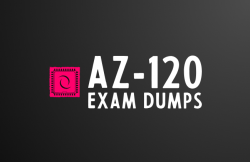Types of Hybrid Funds
Hybrid funds, also known as balanced funds, are mutual funds that offer a combination of equity and debt investments. These funds aim to provide investors with a balanced portfolio by diversifying their investments across different asset classes. In this article, we will explore the various types of hybrid funds available in the market, each with its unique characteristics and investment strategies.
-
Conservative Hybrid Funds: Conservative hybrid funds are designed for investors seeking a more conservative approach to investing. These funds typically have a higher allocation to debt instruments, such as government securities and corporate bonds, with a smaller portion allocated to equities. The objective is to provide steady income and capital preservation while offering some potential for capital appreciation.
-
Balanced Hybrid Funds: Balanced hybrid funds aim to strike a balance between income generation and capital appreciation. These funds maintain a relatively equal allocation to both equity and debt instruments, typically around 50% each. The objective is to provide a moderate level of risk with the potential for long-term growth and regular income.
-
Aggressive Hybrid Funds: Aggressive hybrid funds, also known as equity-oriented hybrid funds, have a higher allocation to equities compared to debt instruments. These funds typically invest around 65% to 80% of their assets in equities, while the remaining portion is allocated to debt instruments. The objective is to generate higher capital appreciation by taking advantage of the growth potential of the stock market, while still providing some stability through the debt component.
-
Dynamic Asset Allocation Funds: Dynamic asset allocation funds, as the name suggests, have the flexibility to dynamically adjust their asset allocation based on market conditions. These funds have the ability to increase or decrease their exposure to equities and debt instruments, depending on the fund manager’s outlook on the market. The objective is to optimize returns by capitalizing on favorable market conditions while reducing risk during market downturns.
-
Multi-Asset Allocation Funds: Multi-asset allocation funds go a step further by diversifying investments across not only equity and debt but also other asset classes like gold, real estate investment trusts (REITs), and international securities. These funds offer a broader diversification and aim to capture opportunities across multiple asset classes. The objective is to provide investors with a well-rounded portfolio that can potentially deliver superior risk-adjusted returns.
Conclusion: Hybrid funds offer investors a range of options to suit their risk appetite, investment goals, and time horizon. Conservative hybrid funds provide stability and income, while balanced and aggressive hybrid funds offer varying degrees of equity exposure for potential growth. Dynamic asset allocation funds and multi-asset allocation funds provide additional flexibility and diversification across various asset classes. As with any investment, it’s important to assess your risk tolerance, financial goals, and consult with a financial advisor to determine which type of hybrid fund aligns best with your investment needs.























































